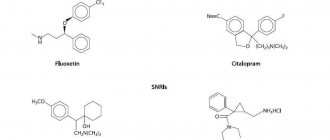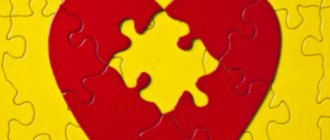Catharsis
In psychology, catharsis is most often taken to be a method by which a person is freed from anxiety and problems.
For example, when trying to remember past events that supposedly influenced problems in the present, a kind of cleansing, or catharsis, occurs. The simplest example of catharsis: cry a lot, and then feel relief.
Basic terms in psychology
Abstraction is the separation of non-essential aspects, properties and connections of the object being studied (subject, phenomenon) and the selection of essential, natural features characteristic of the entire class of these objects.
Agnosia is a violation of visual, auditory or tactile perception while maintaining sensitivity and consciousness.
Agoraphobia is the fear of open space.
Aggression is motivated destructive behavior that goes against accepted social norms and causes physical or moral harm to people.
Amnesia is loss of memory due to brain injury or disease.
Aphasia is a speech disorder. People with aphasia may have difficulty speaking, understanding, reading, writing, and paraphrasing. The cause of aphasia is always brain damage.
Affect is an emotional process, intense and short-term, accompanied by pronounced motor activity and changes in the functioning of internal organs.
An unconditioned reflex is an inherited innate reaction of the body that occurs invariably to certain influences, regardless of the conditions for the occurrence and course of reactions.
Repression is one of the mechanisms of mental defense. It is a motivated forgetting or ignoring an unpleasant fact, event, or emotion.
A hallucination is an image that appears in a person’s mind in the absence of an external stimulus. They are observed with severe fatigue, use of psychotropic substances and with some mental illnesses.
Dissociation is a method of psychological protection of a person from intolerable emotions. In dissociation, events are perceived as happening not to the individual himself, but to someone else.
Your ideal self is the person you want to become. His traits and characteristics are based on expectations from society, family, peers and can be very different from the real, real self.
Illusion is a distorted perception of a really existing object or phenomenon. It can occur not only in patients, but also in mentally healthy people (optical, physical, physiological illusions).
Catharsis is an emotional release that reduces anxiety, conflict, frustration, leading to a better understanding of oneself and an improvement in a person’s mental state.
Cognitive dissonance is the mental discomfort that a person experiences when conflicting ideas: ideas, values, beliefs collide in his mind.
Intelligence quotient (IQ) is a quantitative assessment of a person’s level of intelligence, determined by testing.
Libido is one of the basic concepts of psychoanalysis. Denotes sexual desire or sexual instinct. The term is used to explain the causes of mental disorders and neuroses.
Personality is a person as a bearer of some properties, an individual principle, the implementation of which occurs in the context of social relations.
Mnemonics is a set of special techniques and techniques that facilitate the memorization of information through the formation of associations.
Motivation is an incentive to action, a psychophysiological process that controls human behavior.
Narcolepsy is a disease of the nervous system in which a person is subject to daytime attacks of irresistible sleepiness.
Heredity is the totality of the natural properties of an organism received from its ancestors.
A neuron is a cell that is the main structural and functional unit of the nervous system.
Memory is the ability to retain in consciousness and, at will, reproduce previous impressions and experiences, as well as the very stock of impressions stored in consciousness.
A panic attack is an inexplicable, unmotivated, painful attack of severe anxiety for a person, turning into fear and accompanied by various somatic manifestations (shortness of breath, chest pain, dizziness, etc.).
A placebo is a harmless substance in the form of a medicine that has no medicinal properties, but exhibits a therapeutic effect due to the patient’s self-hypnosis.
Projection is a psychological defense mechanism in which a person attributes his thoughts, feelings and motives to someone or something, believing that he has received information from the outside, and not from within himself.
Psychology is a science that studies the processes and patterns of mental activity.
Multiple personality disorder (split personality, split personality) is a rare mental disorder in which several different personalities “coexist” in one body, replacing one another. Individuals can have different gender, age, temperament and mental abilities, and react differently to the same situation.
Free associations are a technique used in psychoanalysis to study the unconscious. A person talks about everything that comes to mind, despite the fact that his speech may seem absurd or obscene.
Consciousness is a property of human higher nervous activity, the ability to think, reason and determine one’s attitude to reality.
A stereotype is a well-established, generally accepted attitude towards an event, action or behavior, without taking into account all real factors.
Structuralism is a direction in psychology that studies the structure of the mind and analyzes the constituent parts of the cognitive process.
Temperament is the individual characteristics of a person that determine the dynamics of his behavior and mental processes. This structure is laid down from birth.
Tolerance is a term in sociology that means tolerance to a different worldview, lifestyle, customs and traditions.
A conditioned reflex is an acquired reaction of an individual to any stimulus. It occurs during life and is not fixed genetically.
Pheromones are the name of substances secreted by certain types of insects and animals. They serve for chemical communication between individuals and influence many processes of social behavior and reproduction.
A phobia is an irrational, uncontrollable fear in a certain situation.
Frustration is a mental state that occurs when a person’s desires do not correspond to his capabilities; this situation is traumatic to varying degrees for the psyche.
The central nervous system is the main part of the nervous system of humans (and animals), consists of neurons and their processes; the central nervous system includes the brain and spinal cord.
Share link
Reflection
A way to understand yourself through the real world. A person analyzes his actions and decisions, thanks to this he gets to know himself better.
[CHOSEN FOR YOU] 11 psychological hacks for those who are not confident in themselves
Reflection should not be confused with introspection, which we wrote about in the fifth paragraph. Introspection involves analyzing a person’s mental processes, and by reflecting, a person looks at himself from the outside and evaluates his behavior.
Concept psychological fact
Photo by cottonbro: Pexels
Often you can absolutely tell about your experiences and emotional state. You can determine how the people around you feel, what causes their actions or actions. Phenomena of the mental world, the existence of which can be reliably established, are called psychological facts.
Psychological facts differ from other phenomena of the mental world in the following ways:
- Anyone can detect them. For this, standard methods of psychology are used - observation, introspection, experiment. You can establish a psychological fact during a conversation or jogging.
- Psychological facts are varied. They cover your whole life. These are emotions, experiences, goals, motives, character, personal characteristics, memories.
- Their appearance is natural and can be established by analyzing cause-and-effect relationships.
There are a lot of psychological facts. It is impossible to describe them all in one article, and therefore it will be devoted only to behavior and the unconscious. These phenomena were chosen based on the fact that behavior and its slightest changes can be easily seen. It is impossible to argue with the fact that it exists. On the contrary, the existence of the unconscious is not easy to prove, so many experts doubt the advisability of calling it a psychological fact.
Depression and sadness
It’s high time to stop mentioning depression in vain: there’s no need to call bad mood and fatigue that way. This is a serious disease, the causes of which can be an imbalance of neurotransmitters in the brain, endocrine changes, brain damage, severe traumatic events, and so on.
A person with depression needs medical help. Instead, he often receives comments like “I don’t have time to be depressed, I have a lot to do” and “go somewhere, unwind.” And the reasons for this are the use of the name of the disease with or without reason.
Depreciation
Photo by Pexels
This is a classic mechanism for protecting the human self by putting others down. Roughly speaking, one person protects his personality, lifestyle, values and actions at the expense of the “devaluation” of another. Devaluation includes the following phrases: “There is no need to be sad, children in Africa have no food”, “But you are with a man”, “In our time there were no psychologists”, “All women are fools”, etc.
The shadow side of the term: Perceive any criticism addressed to you as devaluation.
Abuse
Photo by Pexels
This term comes from the English word “abuse” - “abuse, insult, bad attitude.” It refers to all possible forms of violence (physical, psychological, economic, sexual) between people.
In an abusive relationship, one person is the aggressor to the other. It’s paradoxical, but often the victim is not aware of his situation, since everyone has their own level of tolerance for violence since childhood, instilled in us by family and society. For example, many only realize in adulthood that their mother is an abuser, and pathological feelings of guilt and psychological manipulation cannot be the basis of healthy parent-child relationships.
Now there are a lot of materials and checklists on the topic of abuse, so if suddenly you feel uneasy while reading, I recommend delving into the topic.
The shadow side of the term: calling any violation of your comfort zone “abuse,” and “abuser” anyone who disagrees with your point of view.
You might be interested in: Abuse on a man’s face. How to distinguish a defender from an aggressor? Advice from physiognomist Artyom Pavlov
Unconscious
You are convinced that behavior in all its manifestations is indeed a psychological fact, the existence of which you can prove and explain. At the other pole is the unconscious. By definition, a person is not aware of it, and therefore can this phenomenon be attributed to psychological facts?
However, if you approach the problem of the unconscious more carefully, you will be able to discover evidence of its existence. At the same time, the concepts of the unconscious and the subconscious are purposefully excluded. Where the unconscious is located and in what relationship it has with consciousness is unknown, and therefore cannot be defined as a psychological fact.
The existence of the unconscious is indicated by several factors that you probably often encounter:
- Famous Freudian slips and slips. The fact is that when writing down comments while talking with a friend, you unnoticed or write a word or phrase that has nothing to do with the topic of the conversation or message. The slips themselves are a psychological fact.
- Defense mechanisms. When a person finds himself in a stressful situation, he may switch off and not even understand where he is. Only after a few months will your experience appear in your dreams, fears, and experiences.
- Tendency to increased anxiety and addictions. Appears under the influence of an unsatisfied need for love and security in childhood, even infancy.
- Unusual memories that seem to be unrelated to the person's life.
- Working with anxiety, phobias, and fears leads to success only if unpleasant situations from the past and forgotten childhood experiences rise to the surface.
Psychological facts are many phenomena of a person’s inner world. To find out about their existence, just watch yourself. Then you will notice how your behavior, gestures, and facial expressions change when meeting different people or performing different activities.











